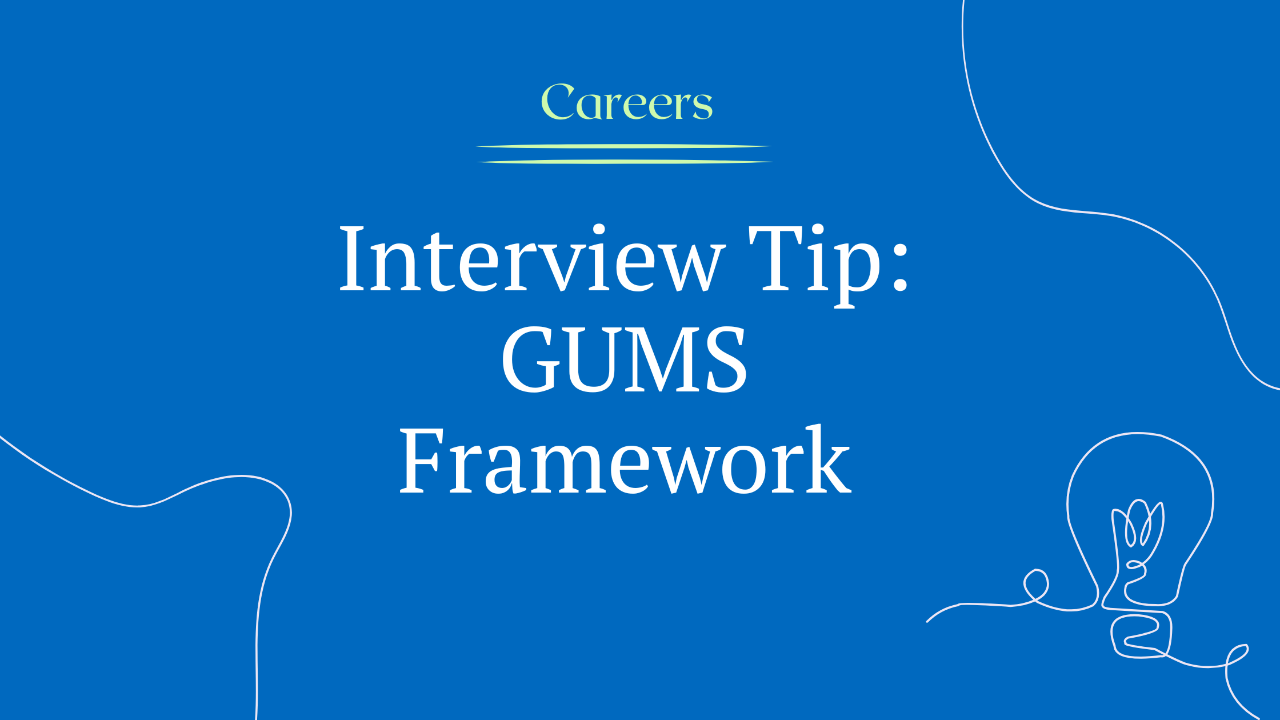💼 GUMS Framework: How to Answer “How Would You Measure Success?”
Nov 06, 2025
When I was mentoring someone prepping for a big tech interview, they asked me the classic question:
“What do I say when they ask how I’d measure success for a product?”
It brought me back to my own early interviews—fumbling through words like “engagement” and “retention” without really knowing what they meant in context. Most people give vague answers. They list random metrics. They forget the one thing that matters most:
👉 Context.
So, I created something simple to help with that.
It’s called the GUMS Framework — and once you understand it, you can confidently answer almost any metrics-based question they throw at you.
Why Metrics Questions Matter in PM Interviews
These aren’t just technical checkboxes.
They reveal:
-
How deeply you understand why a product exists
-
Whether you can break down a user journey logically
-
If you can tie actions to outcomes — and pick the right outcomes
Because here’s the truth:
A PM who can’t define success probably can’t lead the product to it either.
The GUMS Framework
Let’s walk through it.
G → Goal
➡️ Start here. Always.
Ask yourself:
-
What problem is this product solving?
-
Why does it exist — for the user, the business, and the broader ecosystem?
You need to define:
-
User goal (e.g., “Help users share memories easily”)
-
Business goal (e.g, “Drive storage subscriptions through consistent usage”)
-
Ecosystem goal (e.,g. “Integrate with existing Google services to increase stickiness”)
Example (Google Photos):
Help users safely back up, organize, and access their photos across devices, while growing monetization through storage upgrades.
U → User Journey
Now, map the full user experience.
Ask:
-
Who is the user?
-
What steps do they take from first touchpoint to long-term value?
-
What’s the business model? (Free → conversion? Freemium? Subscription?)
Visualizing this helps you build a funnel. And that funnel? It’s your metric roadmap.
M → Metrics
Now comes the fun part — numbers.
Use the AARRR framework to think clearly:
| Stage | User Action | Example Metric |
|---|---|---|
| Awareness | Sees Google Photos ad | Landing page views |
| Activation | Creates a new account | Monthly signups |
| Engagement | Uploads first photo | % of users uploading within 7 days |
| Retention | Continues using weekly | Monthly active users with >X GB of uploads |
| Revenue | Converts to paid storage | Paid subscriptions (monthly/annually) |
Pro tip: Add counter metrics.
Example:
-
If we add aggressive popups to drive conversion, do we see uninstalls go up?
S → Success
This is where you prioritize. You can’t optimize everything.
You need to pick the one metric that matters most based on:
-
Product lifecycle (New launch? Mature product?)
-
Company goals (Growth? Monetization? Engagement?)
-
User behavior (What action reflects real value?)
Example:
For Google Photos, I’d focus on retention — specifically, monthly users with X GB of uploads. This indicates trust and long-term engagement, which is key to eventually converting to paid storage.
A Perspective Shift: What Ancient Wisdom Teaches Us About Metrics
In Taoist thought, true success isn’t just about effort — it’s about alignment.
"Know the nature of the path, and you'll know the next right step."
When we apply that to product, it means not chasing every metric that looks good on a dashboard — but instead understanding the essence of the product and choosing measures that reflect that.
This is echoed in modern behavioral psychology, too. In therapy models like ACT (Acceptance and Commitment Therapy), success is measured not by avoidance of discomfort but by alignment with values and committed action.
So when you're choosing metrics:
-
Pick the ones that match the product’s purpose
-
Think of metrics as a compass, not a scoreboard
Practice Prompt
Here’s an exercise to strengthen your GUMS muscle:
Prompt: You’re the PM for a budgeting app. How would you measure success?
Try walking through:
-
G → Why does this app exist? What value does it bring?
-
U → What journey does the user take?
-
M → What behaviors show us the product is working?
-
S → What metric matters most, and what are the trade-offs?
Bonus: Reflect on what success means for someone using the app. Is it emotional relief? Less stress? More savings? How do you build metrics that honor those goals?
Final Reflection
Whether you're preparing for a PM interview or trying to guide your team, the GUMS framework is more than just a checklist — it’s a way of thinking.
When you align goals, user needs, data, and insight...
You stop just tracking metrics —
You start telling the story behind them.
Welcome to Ambition Redesigned! Where purpose meets progress.
Get one actionable tip delivered to your inbox every Monday.


